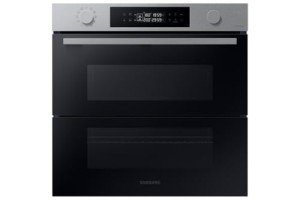The Comprehensive Guide to Built-in Ovens: Features, Benefits, and FAQs
Built-in ovens have actually become a staple in modern kitchens, supplying convenience, style, and effectiveness. Unlike basic freestanding ovens, built-in designs are created to integrate perfectly into cabinetry, therefore raising both the function and aesthetics of kitchen spaces. This article digs deep into the world of built-in ovens, discussing their features, benefits, installation factors to consider, and answers to regularly asked questions.
What is a Built-in Oven?
A built-in oven is an appliance that is developed to be set up straight into a wall or kitchen cabinetry. This setup alternative provides homeowners the ability to create a personalized cooking area, making the most of readily available kitchen square video footage while offering a sleek, expert look.
Secret Features of Built-in Ovens
Built-in ovens are packed with features that deal with a variety of cooking styles and choices. Secret functions consist of:
| Feature | Description |
|---|---|
| Variety of Cooking Modes | Options such as convection baking, broiling, and self-cleaning modes to enhance culinary adaptability. |
| Size and Configuration | Offered in numerous sizes and heights to fit particular kitchen designs, varying from compact to bigger systems. |
| Style Options | Visual choices including stainless steel, black stainless, and custom-made panels to match any kitchen decoration. |
| Smart Technology | Many built-in ovens come geared up with Wi-Fi capabilities, allowing remote tracking and control by means of mobile phone apps. |
| Multi-Functionality | Some designs combine oven and microwave or include steam functions to produce varied cooking choices. |
Benefits of Built-in Ovens
The advantages of incorporating a built-in oven into a kitchen style extend beyond simple aesthetics. Here are some noteworthy advantages:
1. Area Efficiency
Built-in ovens maximize countertop space by getting rid of the requirement for a freestanding system. Their integration into cabinetry permits a cleaner kitchen layout.
2. Boosted Visual Appeal
With sleek designs and personalized surfaces, built-in ovens improve the overall look of the kitchen, adding to a more cohesive style.
3. Improved Cooking Performance
Lots of built-in designs provide advanced cooking innovations, such as convection cooking, which flows hot air for even cooking, lowering cooking times and enhancing results.
4. Convenience and Accessibility
Built-in ovens are frequently positioned at eye level, making it simpler to look at cooking progress, minimizing the need to flex down, and enhancing security.
5. Increased Home Value
A well-designed kitchen with built-in appliances can considerably increase a home's worth, making it more appealing to possible buyers.
Setup Considerations
When picking and setting up a built-in oven, there are a number of factors to think about:
- Kitchen Layout: It's vital to plan how the oven will suit the existing area, including cabinet heights and clearance requirements.
- Electrical and Ventilation Needs: Built-in ovens normally need particular electrical setups; make sure that the kitchen abides by local electrical regulations.
- Expert Installation: Due to the intricacy of setup, employing a professional can guarantee that the oven is set up safely and correctly.
Types of Built-in Ovens
Built-in ovens come in various types, each fit for different cooking styles. Below are some of the most typical:
- Single Oven: A conventional option for daily cooking needs, providing adaptability for baking, roasting, and broiling.
- Double Oven: Offers 2 different cooking compartments, enabling synchronised preparation of multiple meals-- a preferred for large families and those who captivate regularly.
- Wall Oven: These ovens are fully integrated into the wall and come in different styles, consisting of steam ovens and mix microwave.
Popular Brands of Built-in Ovens
Numerous reliable brand names use premium built-in ovens, known for their reliability and series of functions:
- Bosch: Known for smooth style and advanced cooking innovation.
- KitchenAid: Offers creative features and multi-functional designs.
- Samsung: Integrates clever innovation with a modern visual.
- GE Appliances: Provides a range of choices for different spending plans.
Often Asked Questions (FAQs)
1. How do I select the right built-in oven for my kitchen?
When choosing a built-in oven, think about the size of your kitchen, your cooking design and frequency, the available budget, and any required electric outlets or ventilation alternatives.
2. Are built-in ovens energy efficient?
Lots of built-in ovens feature energy-efficient technologies, such as much better insulation and precise temperature controls, which can cause less energy consumption compared to traditional ovens.
3. Can I set up a built-in oven myself?
While some property owners may try DIY setup, working with a professional is highly suggested to ensure safe and proper installation, specifically concerning electrical connections.
4. What built-in oven and hob packages do built-in ovens need?
Regular upkeep includes cleaning up the oven interior and exterior, inspecting the seals for integrity, and ensuring that any smart features or controls are updated as required.
5. Do built-in ovens featured warranties?
Yes, many respectable brand names offer service warranties on their built-in ovens, normally covering parts and labor for a specific duration. Make certain to examine the information before purchasing.
Built-in ovens offer a mix of design, effectiveness, and functionality, making them a popular option for both modern and traditional kitchens alike. With thoughtful consideration of features, setup, and upkeep, property owners can enhance their cooking experience while adding substantial worth to their homes. Whether going with a single or double oven, the financial investment in a built-in design promises to reinvent the culinary landscape of any home.

